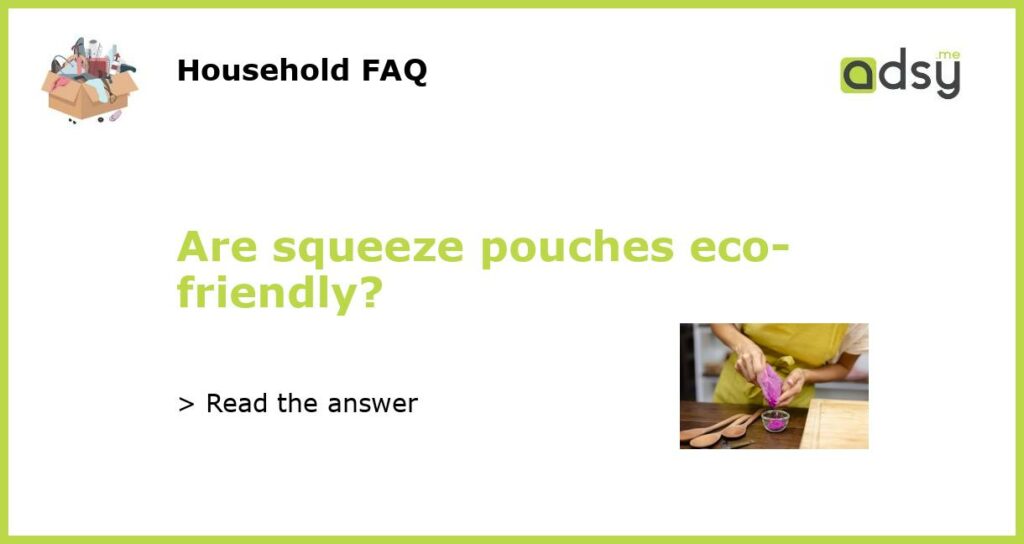What are squeeze pouches?
Squeeze pouches, also known as refillable pouches or reusable pouches, are a popular packaging option for a variety of products, including baby food, yogurt, smoothies, and sauces. They are typically made of a flexible, durable plastic material and have a resealable spout or cap at one end, allowing consumers to easily squeeze out the contents.
Are squeeze pouches environmentally friendly?
The environmental impact of squeeze pouches is a topic of debate. On one hand, they offer several potential benefits in terms of sustainability. Reusable pouches can help reduce single-use plastic waste, as they can be cleaned, refilled, and used multiple times before being disposed of. They also typically require less energy and resources to produce compared to other packaging options, such as glass jars or rigid plastic containers. Additionally, due to their lightweight and compact design, they can be more efficient to transport, reducing carbon emissions during shipping.
However, it is important to consider the full lifecycle of squeeze pouches. While they may have advantages in certain areas, they also have limitations and potential environmental drawbacks. The primary concern is the material used to make the pouches, which is often a plastic film laminate consisting of multiple layers. These layers are necessary to provide the pouch with its desired properties, such as durability, flexibility, and resistance to leakage. Unfortunately, the multiple layers make recycling difficult and may require specialized recycling facilities or programs.
It is worth noting that some companies have started to offer recyclable squeeze pouches that are made from a single layer of plastic, making them easier to recycle. However, these options may not be widely available or accessible to all consumers. Additionally, even if a squeeze pouch is recyclable, it is important to consider the overall recycling rate and infrastructure in a given region. If a significant portion of squeeze pouches end up in landfills or incinerators, their environmental benefits may be diminished.
Are there alternatives to squeeze pouches?
For consumers concerned about the environmental impact of squeeze pouches, there are alternative packaging options available. Glass jars and containers are often touted as a more sustainable choice, as glass is highly recyclable and can be reused indefinitely. However, glass can be heavier and more fragile than plastic, increasing the energy and resources required for transportation and storage.
Other alternatives include flexible packaging made from paper or plant-based materials, such as compostable pouches. These options may offer reduced environmental impact, but they also have their own considerations. Paper-based packaging may require a plastic or compostable film lining to maintain product freshness and prevent leakage. Compostable pouches may only be suitable for industrial or commercial composting facilities, and not all regions have easy access to such facilities.
How can consumers make more sustainable packaging choices?
While the environmental impact of squeeze pouches and other packaging options is complex, consumers have several strategies to make more sustainable choices:
1. Reduce consumption: Consider whether single-serve or portable packaging is necessary for a particular product. Choosing larger sizes or bulk options can reduce overall packaging waste.
2. Choose recyclable or reusable options: Look for packaging that is easily recyclable or can be reused multiple times. Check local recycling guidelines to ensure proper disposal.
3. Support brands with sustainable practices: Research and choose products from companies that prioritize environmental sustainability, including packaging choices.
4. Advocate for improved recycling infrastructure: Encourage local authorities and businesses to invest in recycling programs and facilities that can handle a wide range of materials, including complex packaging like squeeze pouches.
5. Consider the entire lifecycle: Evaluate the full lifecycle of a product, including manufacturing, transportation, and disposal, when making purchasing decisions. This can help determine the overall environmental impact.
Balancing convenience and sustainability
While squeeze pouches offer certain eco-friendly benefits, such as reducing single-use plastic waste and lowering transportation emissions, their overall sustainability depends on various factors. The material used and the availability of recycling options play a significant role in determining their environmental impact.
Consumers can make more sustainable packaging choices by considering alternatives, such as glass containers or compostable pouches, and by following sustainable consumption practices. By reducing consumption, choosing recyclable or reusable options, supporting sustainable brands, advocating for better recycling infrastructure, and considering the entire lifecycle of products, consumers can play a part in minimizing the environmental impact of packaging choices.






